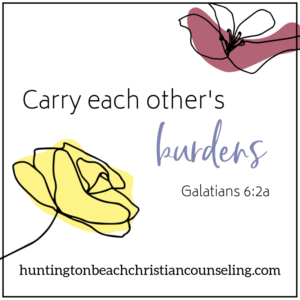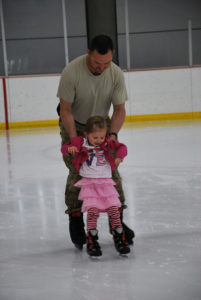3 Ways to Save Your Marriage
You are here because you want to save your marriage? Good for you! We are proud that you are not giving up so easily as many others do. The divorce rate is steadily increasing to 60% in many parts of the U.S. and sadly those are the ones that are being reported.
For example, my wife’s parents want a divorce, but they can’t afford it, so they have just agreed to separate. Their hearts, though, are divorced. There are many couples like that and despite the sad reality, we offer you a fresh way to look at your marriage in hopes to help you retake back that amazing relationship that God destined you to have! Huntington Beach Christian Counseling offers guidance and support to help you restore and strengthen your marriage.
3 Ways to Save Your Marriage
 There are three C’s that we will be covering today: Compatibility, Compromising, and the most powerful one, Complimentary. These three stages of relationship maturity can help put some perspective to see where you are at in your marriage to see what is next for us to move on.
There are three C’s that we will be covering today: Compatibility, Compromising, and the most powerful one, Complimentary. These three stages of relationship maturity can help put some perspective to see where you are at in your marriage to see what is next for us to move on.
Sometimes having perspective can guide you in a gentle practical way that disarms both partners instead of having to make one of you the villain and the other the hero. My perspective has always been not to make one person the terrible monster but to understand the other person’s upbringing and what has transpired throughout the relationship that has aided both partners to be who they are today.
If there has been infidelity or betrayal, we don’t excuse that behavior by looking away. We confront it and deal with it so that there can be a resolution between both spouses, where appropriate. The 3 C’s are designed to help the partners in a relationship start a dialogue that will show them how they can move together to the next step.
Compatibility
Compatibility is a nice start to any relationship because it’s about sharing common interests. I’m sure both you and your partner were mutually attracted to each other. You both shared great moments that bonded you together.
Many couples love hiking, dancing, watching movies together, traveling, working on projects, they love pets, they have strong academic values, they want kids, they don’t want kids, etc. They have a common sharing that defines who they are that joins them together.
The riff between compatible people is when the sharing runs out. One spouse may like sports and that spouse may choose to watch ESPN instead of going on a date with their partner. That can cause tensions that turn into arguments. That same couple will then argue because the same spouse who loves watching sports may now want sexual intimacy but the spouse who was neglected will feel distant and say that they are tired.
 By now I’m sure you see that these issues can slowly begin to turn a marriage into a rusty and withered relationship. How can compatibility save your marriage? This can save your marriage because you can talk to your spouse about how both of you had a great start but how you need to move forward. The start needs to be celebrated. Reflect on the enjoyable times you had together which will help you both to bond again.
By now I’m sure you see that these issues can slowly begin to turn a marriage into a rusty and withered relationship. How can compatibility save your marriage? This can save your marriage because you can talk to your spouse about how both of you had a great start but how you need to move forward. The start needs to be celebrated. Reflect on the enjoyable times you had together which will help you both to bond again.
It’s hard to stay angry when both of you reminisce about awesome times that both of you had. This can disarm the angriest of spouses and turn their cynicism to hope. Compatibility is not the complete answer, however, because no couple on this planet relies only on compatibility.
There will always need to be a sacrifice made to support the other spouse. Unfortunately, many couples end their relationship right at this step and don’t move beyond because the differences separate them to the point of no return. The good news is that it doesn’t have to end here and that it can mature and move on.
Compromising
We need to humble ourselves sometimes with big decisions so that as a couple we can mutually benefit. This is a noble perspective and helpful for compatible couples to understand. My wife and I use to argue about our dates which ended up ruining some of our Saturday nights. We made a pact to alternate our dates by giving each other two dates per month for us to coordinate.
When it was my turn, I would love to go to an open mall, eat some spicy food and then go see an action movie. Not the most romantic I know. When it was my wife’s turn, we would go to the beach and then eat dinner at sunset which was definitely romantic. We were able to learn about each other and appreciate how the other loved to have fun.
We learned to compromise which helped us to grow in our relationship before it got stale. Maybe your relationship is stale at this point, and it needs some saving. Most couples may be at this stage, which is a great step to be on, however, sometimes there are betrayals and hurts during this stage and we must compromise to make the marriage work. Many couples are in this stage because they have been dating and been married for years.
If you have suffered pain because of your spouse or both of you are in deep stuff my heart goes out to you. I want you to feel validated and supported by this article which may spark a talk between you and your partner to talk about this stage. You can talk about how you have compromised in certain areas in your relationship which can then uplift the marriage in its strengths.
 A positive tone will help a lot with communication because it can win someone over. The main issue with the stage of compromise is that it can take you far but not all the way. It’s great to compromise however, one spouse may get burned out if they don’t have the constant refreshment.
A positive tone will help a lot with communication because it can win someone over. The main issue with the stage of compromise is that it can take you far but not all the way. It’s great to compromise however, one spouse may get burned out if they don’t have the constant refreshment.
Hebrews 3:12-13 says that our hearts need daily encouragement to remain soft. If we aren’t open and don’t encourage one another then it will take only a day to harden our hearts. Compromising also begs the spouse who is constantly sacrificing to request love in return. I sure feel that way when I sacrifice for my wife. If I help her with the home or take care of the car, I can expect favors in return.
However, she may not be so ready to return that love the way that I expect. I confess that it hurts, and I feel resentment in my heart, so I become quiet and resistant. It happens the other way around too. My wife may help me out with m projects or take care of responsibilities in the home and then she can expect me to be grateful for her efforts. Sometimes I don’t notice which hurts her and I let her down. Compromising is a great stage to be in, but it won’t be the stage to save your marriage.
Complimentary
I don’t mean complimentary as in saying compliments to your spouse. All though I highly recommend that you verbally compliment your partner to lift them up. I can testify that verbally complimenting my wife has helped our marriage so much. My wife feels acknowledged and honored in our home. You can never go wrong with that.
However, the real meaning of being a complimentary couple is being a couple who helps elevate each other. This perspective and lifestyle will save your marriage. It takes both of you, no matter the past or present, to get this right on point. One spouse trying this out may not get it done but it’s a start.
After a few weeks if you don’t see a change in your spouse please reach out for help. Therapy, couples’ groups, church retreats, classes, training, support groups, group dates, being ministered by a shepherding couple in your church, all these things can help support you and your spouse.
Before I get derailed, let’s go back to what a complimentary couple looks like. That couple is first willing to help and initiate help. This is a stark contrast to Compromising (the second of the 3 C’s), because with Compromising you must sacrifice. Most times, when we sacrifice, we aren’t willing. We sacrifice out of nobility or necessity. We may be talked into it or discipled into it. It’s not from our willing hearts.
Most of us sacrifice begrudgingly and hope for the best. With this last C, the Compromising couple serves and helps each other so that the couple is elevated. They are thinking “How can I help my spouse so both of us succeed?” This is an amazing perspective because both partners will feel inspired by the other to the point where both are going to try to outgive themselves in a healthy way.
 Think about that vision for a moment. Both spouses work together to help elevate each other. What kind of marriage do you think they’ll have? It won’t be just a surviving marriage; it will be a thriving marriage! This is the secret to saving your marriage. Both of you must sit down, most likely with another couple, and process this vision to help both learn to inspire each other. This cannot be done alone. Both partners must work together so both of you can prosper.
Think about that vision for a moment. Both spouses work together to help elevate each other. What kind of marriage do you think they’ll have? It won’t be just a surviving marriage; it will be a thriving marriage! This is the secret to saving your marriage. Both of you must sit down, most likely with another couple, and process this vision to help both learn to inspire each other. This cannot be done alone. Both partners must work together so both of you can prosper.
Remember that none of these stages are bad. They are all good. The point of this article is to prepare you to have a fruitful discussion with your spouse about where both of you are. You may be tempted to think that both of you are in different stages. Please remember that it’s both of you together. So, both of you would be in the same stage.
Maybe one of you is ready to move on, but I strongly encourage that spouse to slow down and wait for the other spouse to catch up before moving on. This way doing the stages together will help the other spouse feel loved by you and ready to move forward. Once you identify which stage you are in then you will be ready to discuss how to take the appropriate steps for the next one.
The process of the 3 C’s will help disarm both of you and help ensure that you are taking the same steps onward as a couple. Have another couple walk with you in this way so that you have accountability and support if there are any riffs between you. My deepest conviction is that if you give the 3 C’s a try, it can show you where you are and help you see where you want to go. And that’s to be the best marriage you can be!
Submit to one another out of reverence for Christ. Wives, submit yourselves to your own husbands as you do to the Lord. For the husband is the head of the wife as Christ is the head of the church, his body, of which he is the Savior. Now as the church submits to Christ, so also wives should submit to their husbands in everything.
Husbands, love your wives, just as Christ loved the church and gave himself up for her to make her holy, cleansing her by the washing with water through the word, and to present her to himself as a radiant church, without stain or wrinkle or any other blemish, but holy and blameless.
In this same way, husbands ought to love their wives as their own bodies. He who loves his wife loves himself. After all, no one ever hated their own body, but they feed and care for their body, just as Christ does the church – for we are members of his body.
“For this reason, a man will leave his father and mother and be united to his wife, and the two will become one flesh.” This is a profound mystery – but I am talking about Christ and the church. However, each one of you also must love his wife as he loves himself, and the wife must respect her husband. – Ephesians 5:21-33
Christian Marriage Counseling
If you’re looking for additional support, I invite you to contact me or one of the other Christian Counselors at Huntington Beach Christian Counseling in the online counselor directory to schedule an appointment. It would be my pleasure to meet with you to help you not only save your marriage, but to strengthen it beyond what you’ve experienced before.
“Coffee and Conversation”, Courtesy of Priscilla Du Preez, Unsplash.com, CC0 License; “Eye to Eye”, Courtesy of Andriyko Podilnyk, Unsplash.com, CC0 License; “Devotions”, Courtesy of Priscilla Du Preez, Unsplash.com, CC0 License; “Kissing”, Courtesy of Mauricio Livio, Unsplash.com, CC0 License

 The pandemic has brought many issues to the surface such as depression due to constant isolation and anxiety when alone. Autophobia is the fear of being alone and is especially difficult the older you are. Undoubtedly families and couples did better than singles while being left alone for such a long time during the pandemic.
The pandemic has brought many issues to the surface such as depression due to constant isolation and anxiety when alone. Autophobia is the fear of being alone and is especially difficult the older you are. Undoubtedly families and couples did better than singles while being left alone for such a long time during the pandemic. Sadly, many couples also ended their relationship in 2020 because the pandemic tested them beyond their capabilities and forced them to tap out. Couples’ characters were exposed and with the added pressures of isolation, they had no one to turn to. These marriages had little to no support that otherwise could have been of immense help.
Sadly, many couples also ended their relationship in 2020 because the pandemic tested them beyond their capabilities and forced them to tap out. Couples’ characters were exposed and with the added pressures of isolation, they had no one to turn to. These marriages had little to no support that otherwise could have been of immense help. This is an interesting passage for couples because if my partner and I are one then who is going to help our one unit? Some may suggest that spouses are the other individual to help them out, but we can challenge that position by reminding everyone of the goal that God designed in Genesis 2:24 “the two will become one.”
This is an interesting passage for couples because if my partner and I are one then who is going to help our one unit? Some may suggest that spouses are the other individual to help them out, but we can challenge that position by reminding everyone of the goal that God designed in Genesis 2:24 “the two will become one.” Having a healthy dynamic marriage is priceless. I look back to when Nicole and I got premarital counseling and I shudder to think what would be said of us right now if we had never invested in our relationship after our engagement. In truth, our marriage would be a nightmare.
Having a healthy dynamic marriage is priceless. I look back to when Nicole and I got premarital counseling and I shudder to think what would be said of us right now if we had never invested in our relationship after our engagement. In truth, our marriage would be a nightmare.




 It can be exhausting to deal with behavior problems in children. Parents often feel angry and confused about their child’s behavior. It can be terrifying when you don’t understand what’s happening with your child, don’t know how to help, but feel totally responsible for making things better for them.
It can be exhausting to deal with behavior problems in children. Parents often feel angry and confused about their child’s behavior. It can be terrifying when you don’t understand what’s happening with your child, don’t know how to help, but feel totally responsible for making things better for them. For parents struggling to deal with their child’s difficulties, the principle question that needs to be considered is What is my child’s need that’s being unmet? When we talk about unmet needs, however, it’s important to remember that these are deep, emotional needs, not issues regarding toys or other material things.
For parents struggling to deal with their child’s difficulties, the principle question that needs to be considered is What is my child’s need that’s being unmet? When we talk about unmet needs, however, it’s important to remember that these are deep, emotional needs, not issues regarding toys or other material things. It’s clear when looking at this Functional Behavioral Analysis chart that it’s possible to come to entirely different conclusions about the behavior when you consider the function of the behavior. It’s not always as clear cut as parents assume it to be, meaning that problem behaviors are not always problems but rather dysfunctional coping mechanisms.
It’s clear when looking at this Functional Behavioral Analysis chart that it’s possible to come to entirely different conclusions about the behavior when you consider the function of the behavior. It’s not always as clear cut as parents assume it to be, meaning that problem behaviors are not always problems but rather dysfunctional coping mechanisms. In children whose problem behavior relates to bodily functions, it is sometimes the case that the child feels they have so little control in their life that they develop problem behaviors with their bodily functions because that’s one thing they do have control over.
In children whose problem behavior relates to bodily functions, it is sometimes the case that the child feels they have so little control in their life that they develop problem behaviors with their bodily functions because that’s one thing they do have control over. Trust is having confidence in someone and believing that he or she will love you forever and is always going to remain loyal. Trusting people is difficult because it means you need to believe that you are able to depend on them and feel comfortable with them to the point where you are okay with confiding in them and letting them see you in a vulnerable state. Trust acts as a key component for the foundation of any kind of relationship.
Trust is having confidence in someone and believing that he or she will love you forever and is always going to remain loyal. Trusting people is difficult because it means you need to believe that you are able to depend on them and feel comfortable with them to the point where you are okay with confiding in them and letting them see you in a vulnerable state. Trust acts as a key component for the foundation of any kind of relationship. The following list contains steps that can help partners find ways of gaining trust in their relationships. This list does not need to be followed in order but each item should be included in an ongoing pattern of communication within a relationship.
The following list contains steps that can help partners find ways of gaining trust in their relationships. This list does not need to be followed in order but each item should be included in an ongoing pattern of communication within a relationship. Mistakes in relationships are inevitable and going to happen. However, it is very possible to work towards repairing a damaged relationship and lead it towards healing. Both partners must be able to admit mistakes and be open to coming together to rebuild trust and work through their mistakes.
Mistakes in relationships are inevitable and going to happen. However, it is very possible to work towards repairing a damaged relationship and lead it towards healing. Both partners must be able to admit mistakes and be open to coming together to rebuild trust and work through their mistakes. Building trust takes intentionality and a lot of time and effort. It is never easy to establish trust and this is made even more difficult if some sort of betrayal has occurred.
Building trust takes intentionality and a lot of time and effort. It is never easy to establish trust and this is made even more difficult if some sort of betrayal has occurred. To really understand what this means, picture a little girl whose father is not around most of the time, is authoritarian, doesn’t show any interest in her recitals, and whose mother is there but is always preoccupied with her own personal issues.
To really understand what this means, picture a little girl whose father is not around most of the time, is authoritarian, doesn’t show any interest in her recitals, and whose mother is there but is always preoccupied with her own personal issues. To satisfy oneself sexually is not the only obvious payoff. Having an affair also tends to heal the wounded part of the self that encourages the behavior more than anything else. Another payoff is the thrill that comes with indulging in the forbidden actually building up the erotic energy in the relationship.
To satisfy oneself sexually is not the only obvious payoff. Having an affair also tends to heal the wounded part of the self that encourages the behavior more than anything else. Another payoff is the thrill that comes with indulging in the forbidden actually building up the erotic energy in the relationship. Both of these results are terrible and God wants something much better for us. The traditional marriage vows that say “to have and to hold, to love, honor and cherish, forsaking all others.” is already a great reminder for us to keep. If you or your spouse doesn’t feel loved, honored, or cherished, it’s best to take action right away, probably through the help of a counselor.
Both of these results are terrible and God wants something much better for us. The traditional marriage vows that say “to have and to hold, to love, honor and cherish, forsaking all others.” is already a great reminder for us to keep. If you or your spouse doesn’t feel loved, honored, or cherished, it’s best to take action right away, probably through the help of a counselor. Being married, whether you did it in a church or not, means you made a promise before God. He cares deeply about your relationship. Allow him to be in it. Ask for His help to love right, to be more forgiving, to fight your own selfishness, put up good boundaries, and be responsible for your own emotional struggles.
Being married, whether you did it in a church or not, means you made a promise before God. He cares deeply about your relationship. Allow him to be in it. Ask for His help to love right, to be more forgiving, to fight your own selfishness, put up good boundaries, and be responsible for your own emotional struggles. Perhaps they feel like their spouse doesn’t really know or love them. An affair offers the illusion of feeling desired, alive, and escaping from the mundane reality of everyday life.
Perhaps they feel like their spouse doesn’t really know or love them. An affair offers the illusion of feeling desired, alive, and escaping from the mundane reality of everyday life.  Even if your children don’t know what’s happening, they’ll sense the shaky foundation of your marriage. Your marriage should be the solid rock on which you can build your family. An affair cracks the foundation of the family, no matter what excuse you make for it.
Even if your children don’t know what’s happening, they’ll sense the shaky foundation of your marriage. Your marriage should be the solid rock on which you can build your family. An affair cracks the foundation of the family, no matter what excuse you make for it. People at church will also tend to be polarized by your illicit relationship. If you are a ministry leader or participant, you may be asked to step down as you deal with the fallout of your decision to commit adultery. Most people will likely side with your spouse, not you.
People at church will also tend to be polarized by your illicit relationship. If you are a ministry leader or participant, you may be asked to step down as you deal with the fallout of your decision to commit adultery. Most people will likely side with your spouse, not you. No one just wakes up one morning and arbitrarily decides, “I’m going to have an affair.” Most of us have internal inhibitions against cheating. What happens is that we take one seemingly harmless step at a time, and before we know it, we’re entangled in adultery.
No one just wakes up one morning and arbitrarily decides, “I’m going to have an affair.” Most of us have internal inhibitions against cheating. What happens is that we take one seemingly harmless step at a time, and before we know it, we’re entangled in adultery. When most people think about anger they imagine verbal and physical outbursts. However, anger manifests in many different ways including a silent and invisible expression. The phrase “it makes my blood boil” accurately describes how anger can feel.
When most people think about anger they imagine verbal and physical outbursts. However, anger manifests in many different ways including a silent and invisible expression. The phrase “it makes my blood boil” accurately describes how anger can feel. You can think of anger like a water bottle. Each situation that frustrates or angers us adds a drop to the water bottle. Eventually, if the water is never released it becomes too full and overflows. In the end, it’s usually something that doesn’t normally frustrate us that ends up causing the overflow.
You can think of anger like a water bottle. Each situation that frustrates or angers us adds a drop to the water bottle. Eventually, if the water is never released it becomes too full and overflows. In the end, it’s usually something that doesn’t normally frustrate us that ends up causing the overflow. If we only look at anger when someone is in the middle of being angry, we will never understand their anger fully. Whether sitting with a 4-year-old who has constant tantrums or an ex-convict who recalls having blackout rages, the conversations are similar.
If we only look at anger when someone is in the middle of being angry, we will never understand their anger fully. Whether sitting with a 4-year-old who has constant tantrums or an ex-convict who recalls having blackout rages, the conversations are similar.
 What about the person who hurt you? They apologize. You forgive them. You assume this means they won’t commit the offense again. But then the person hurts you more.
What about the person who hurt you? They apologize. You forgive them. You assume this means they won’t commit the offense again. But then the person hurts you more. As Christians, we know we are obligated to forgive. So, if there’s a time we’re struggling with the hurt someone has caused us, we often feel guilty and ashamed that we can’t “snap out of it” and immediately go on with life.
As Christians, we know we are obligated to forgive. So, if there’s a time we’re struggling with the hurt someone has caused us, we often feel guilty and ashamed that we can’t “snap out of it” and immediately go on with life. Then Peter came to Jesus and asked, “Lord, how many times shall I forgive my brother or sister who sins against me? Up to seven times?” Jesus answered, “I tell you, not seven times, but seventy-seven times.” – Matthew 18:21-22
Then Peter came to Jesus and asked, “Lord, how many times shall I forgive my brother or sister who sins against me? Up to seven times?” Jesus answered, “I tell you, not seven times, but seventy-seven times.” – Matthew 18:21-22 Some people will never be in our lives again because of the significant damage they’ve caused us. Sometimes we may have removed ourselves emotionally from something that happened a long time ago.
Some people will never be in our lives again because of the significant damage they’ve caused us. Sometimes we may have removed ourselves emotionally from something that happened a long time ago. When you make a conscious choice to seek help as a married couple, it signals a pivotal moment in your relationship. Though counseling will never be easy, it is the commitment to a better marriage that is the most crucial aspect of seeking additional assistance.
When you make a conscious choice to seek help as a married couple, it signals a pivotal moment in your relationship. Though counseling will never be easy, it is the commitment to a better marriage that is the most crucial aspect of seeking additional assistance. However, if one spouse has pressured the other into attending, and if they have absolutely no desire to be there, it can do more harm than good.
However, if one spouse has pressured the other into attending, and if they have absolutely no desire to be there, it can do more harm than good. If one of the individuals involved in the marriage is dealing with serious emotional trauma from before or during the marriage, their well-being must be prioritized. They may be going through something that requires individual therapeutic work.
If one of the individuals involved in the marriage is dealing with serious emotional trauma from before or during the marriage, their well-being must be prioritized. They may be going through something that requires individual therapeutic work.